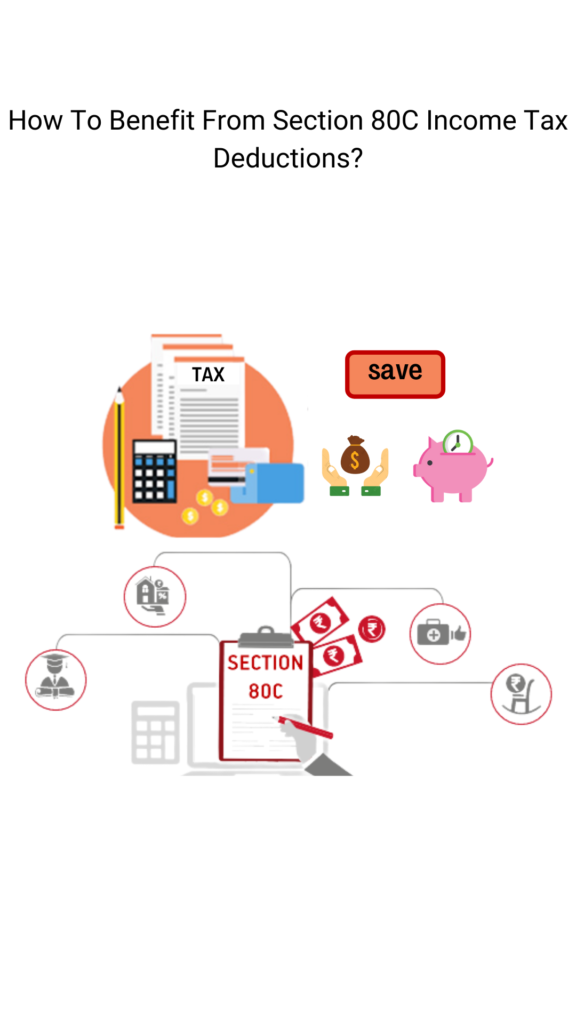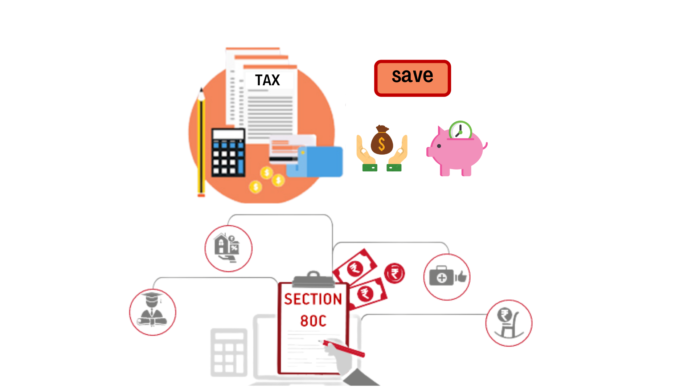As per Indian income tax rules, any individual earning more than Rs 2.5 lakh per year is liable to pay taxes to the government. Moreover, if one’s income is just under Rs 5 lakh, then they can get a rebate and no tax liability ultimately. Additionally, it is also possible to claim deductions and exemptions to result in zero tax liability for earnings up to Rs 10 lakh per year. This magic lies at the hands of Section 80C of the Income Tax Act. With the help of Section 80C, one can reduce their income tax liability significantly up to Rs 1.5 lakh in total. Thus, this blog details the process to get the most benefits out of Section 80C of the Income Tax Act.
Table of Contents
List of Section 80C income tax deductions available
Without separate investment
1. EPF contribution for salaried employees
As a salaried employee earning under Rs 15,000 per month, one pays a monthly EPF contribution. This EPF contribution is deductible under Section 80C of the Income Tax Act. This deduction does not require any additional investment. Moreover, EPF contribution falls under the EEE category – hence the monthly contribution, the interest received from EPF as well as the final EPF withdrawal amount are all exempt from tax liability.
2. Home loan principal amount
If one has taken a home loan then the principal amount paid for it for an entire year can be claimed under Section 80C. The payment paid as interest on a home loan is also deductible under Section 24 and 80EEA separately.
3. Home registration charges
When one purchases a new house then the stamp duty and registration charges paid during that time are claimable under Section 80C.
4. Tuition fees
Individuals with children attending school or college can claim a deduction on their tuition fee payment. The fee invoice for school/college has several components to it. Consequently, the deduction is not applicable on the full fee amount paid but rather only on the tuition fee component of it. This claim is allowable for up to two children per parent. Therefore, both parents if taxpayers are liable to claim the deduction for up to two children. It is also applicable for divorced parents who pay taxes and is valid for adopted children. However, the education institute has to be located in India and should be recognized by the government. It is not applicable for coaching centres fee payment.
5. Life insurance policy
The premium paid annually for one’s life insurance policy is claimable under Section 80C. However, the premium payment must be 10% or less than the total sum assured. One must definitely have a life insurance policy, especially if they have dependents on them. Term insurance plan is a great option which we recommend. The deduction is applicable for term insurance plans, endowment plans and ULIPs as well.

With new invesments
1. NPS – National Pension Scheme
The National Pension Scheme was launched by the Central Government in 2004. It was primarily a pension program open to all government employees of the country. The exception being the armed forces. The members have to pay investments at regular intervals during their employment years. Once they retire, they get access to a monthly pension. This scheme is specifically beneficial to private-sector employees as they can arrange for pension post-retirement. Individuals who do not want to go ahead with high-risk investments such as stock market trading are also good candidates for this scheme.
NPS falls under the EEE category. Therefore, the contribution, interest received and withdrawal of up to 60% are all tax-free. 40% of withdrawal has to go into an annuity plan. One can claim up to Rs 1.5 lakh under Section 80CCD(1) as well as up to Rs 50,000 under Section 80CCD(1B). Hence, total deduction possible is up to Rs 2 lakh. Additionally, one can claim up to 10% of their basic + DA on the employer’s contribution under Section 80CCD(2).
Learn more details in National Pension Scheme | Better Than PPF/EPF/ELSS/APY?
2. ELSS – Equity Linked Savings Scheme
These are a type of mutual fund investment that falls under the EET category. The contribution and interest earned under ELSS are tax-free. However, the withdrawal amount will be taxable as per your income tax slab rate. Although it is partly taxable, ELSS is still a great investment option since it invests in equity funds that generate high returns and it has a lock-in period of only 3 years. Thus, this is the only investment plan under Section 80C with highest returns and minimum lock-in period.
3. SSY – Sukanya Samriddhi Yojana
The Sukanya Samriddhi Yojana account can only be opened for girl children who are under the age of 10 years. This account can be opened by the parent or legal guardian of the girl child on behalf of her. Only one account is allowable for one girl child. Moreover, a single parent can open a maximum of two such accounts in the name of two of his girl children. It falls under EEE category with full tax exemption on contribution, interest earned and final withdrawal amount.
4. PPF – Public Provident Fund
PPF scheme is a long-duration investment scheme that is free of risk and has a lucrative interest rate. The lock-in period is 15 years and it is EEE tax exempt. It is one of the most secure investment options where even a Court cannot put the PPF investment for collateral in any case.
5. Fixed deposit of 5 years
A fixed deposit with 5 year lock-in period is deductible under Section 80C. It falls under ETE category – wherein the investment amount and withdrawal amount are tax-free but the annual interest earned will be taxable.
6. Post office savings account of 5 years
A post office savings account with 5 year lock-in period is deductible under Section 80C. It also falls under the ETE category – wherein the investment amount and withdrawal amount are tax-free but the annual interest earned will be taxable.
7. National saving certificate of 5 years
A national saving certificate with 5 year lock-in period is deductible under Section 80C. It also falls under the ETE category – wherein the investment amount and withdrawal amount are tax-free but the annual interest earned will be taxable.
8. SCSS – Senior Citizens Savings Scheme
The Senior Citizens Savings Scheme, also known as SCSS, is a government scheme that was brought about in October of 2004. It is a five-year scheme, but primarily for the senior citizens of the country. Furthermore, the Senior Citizens Savings Scheme gives a quarterly interest at about 9% pa. Since it has the Central Government’s backing, it is a risk-free scheme with assured returns and apt for people above the age of 60 years.
Learn more about this topic in the following video.
Join the LLA telegram group for frequent updates and documents.
Download the telegram group and search ‘Labour Law Advisor’ or follow the link – t.me/JoinLLA
It’s FREE!



